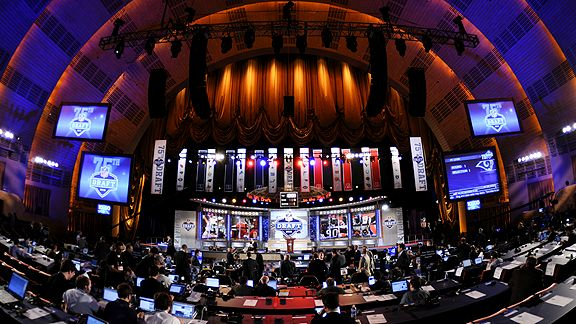A couple weeks ago we took a look at what it would cost the Green Bay Packers to trade way up in the 2016 NFL Draft.
https://packerstalk.com/2016/04/06/green-bay-packers-2016-draft-the-big-gamble/
This week we take a look at some realistic trade partners for the Packers to move down from pick 27. While it would be frustrating to watch three hours of draft coverage Thursday, only to see the Packers wait to pick for another 24 hours, it may be in the Packers best interest to collect more picks in a draft that seems deep in a few areas where they have needs.
Teams could be targeting all sorts of different players to move into Green Bay’s selection, but they would find the most interest if a team wants to take a Quarterback. Paxton Lynch will almost certainly be gone by pick 27, but there are teams who will want to draft Connor Cook in the 1st round to get the extremely valuable 5th year option on his contract.
Here is a look at prospective teams looking to trade up for Quarterbacks and the projected compensation packages (based on the NFL draft trade value chart):
- Denver Broncos 31 (1st) and 94 (3rd)
- Cleveland Browns 32 (2nd) and 99 (4th)
- Dallas Cowboys 34 (2nd) and 101 (4th)
- San Francisco 49ers 37 (2nd), 105 (4th), and 142 (5th)
- New Orleans Saints 47 (2nd), 78 (3rd), and 152 (5th)
- Buffalo Bills 49 (2nd), 80 (3rd), and 117 (4th)
Some of those trades could be improved by the Packers including another lower round pick, and some teams may be willing to overpay a little to get the last of the high value Quarterbacks. Of course, there will be other teams looking to trade up to the get the non-Quarterback they are targeting too.
Ted Thompson was very aggressive in acquiring more pick earlier in his career, but has been more likely to keep his own picks in recent years. However, with the historic depth at defensive line, and they multiple areas the Packers need to fill on their roster, this year could be a great year to live up to the nickname “Trader Ted”.
Andrew Mertig is a a lifelong Packers fan and draft enthusiast. He has covered the NFL draft for radio and television stations in Green Bay. He is currently a host of the Pack-A-Day podcast and a writer for PackersTalk.com. You can follow him on Twitter @andrewmertig

5 responses to “Green Bay Packers 2016 Draft: Trading Down”
I think the values used in this article are mixed up. If Denver trades a first (31) and a third (94) for our #27 then Cleveland trading a second (32) would have to give something better (lower) than #94 (as the Broncos did) not higher, a fourth (99) like the article states. Same
scenario for the Dallas trade.
The math doesn’t always work out perfectly in these trade scenarios because teams have picks that possess different values. They would probably add in a lower round pick or add a higher pick, and the Packers would include another pick.
Some of the sample trades are slightly above the value of the Packers pick, some slightly below. I doubt you’d find many trades that have exactly equal value (and not every team views the trade chart the same).
Your figures still don’t make sense. Look at the numbers.
Pick 27 = 680
Pick 31 (600) + Pick 98 (108) = 708
Pick 32 (590) + Pick 99 (104) = 694
Both would be good deals. Of course, if the Packers were offered both packages, they would take the Broncos. I wasn’t insinuating that all these trade offers are perfectly equal, just that they would be fair value.
For anyone else wondering, here’s the rest of the numbers:
34 (560) + 101 (96) = 656
37 (530) + 105 (84) + 142 (35) = 649
47 (430) + 78 (200) + 152 (30.6) = 660.6
49 (410) + 80 (190) + 117 (60) = 660
In fairness, something probably needs to be added to sweeten the pot to make it worth it for the Packers in the last four situations.
The math doesn’t always work out perfectly in these trade scenarios because teams have picks that possess different values. They would probably add in a lower round pick or add a higher pick, and the Packers would include another pick.
Some of the sample trades are slightly above the value of the Packers pick, some slightly below. I doubt you’d find many trades that have exactly equal value (and not every team views the trade chart the same).